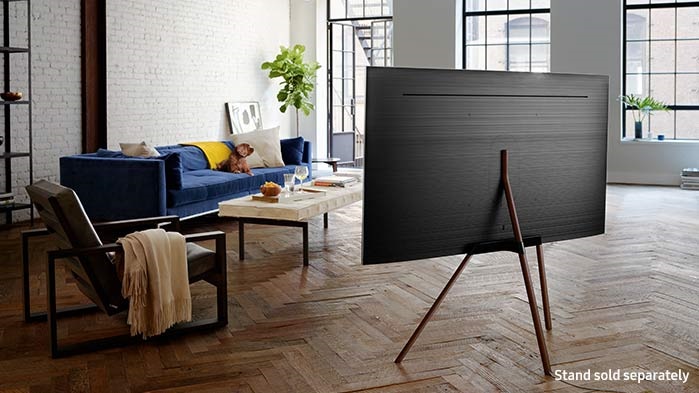The bold and the beautiful: all you need to know about Samsung's QLED TV tech
Go quantum with Samsung

TVs are in a great place right now. Whereas for years TV manufacturers were limited to making standard Full HD sets, new technologies mean that massive advances are now being made in TV tech.
QLED is one such technology, and it means that Samsung’s television sets are brighter and more colourful than ever before.
Ultra HD might mean four times the pixels of regular HD televisions, but what’s the point of all those pixels if they’re dull, lifeless, and lacking in colour.
QLED allows each and every pixel to perform to its best, resulting in images that are more colourful and vibrant, allowing you to get lost in your viewing experience like never before.
So how does it work?
Allow us, if you will, to get a little nerdy about the new technology for a moment.
QLED roughly stands for Quantum dot, light emitting diode, and refers to the use of a Quantum dot filter to create a TV’s colours.
This filter is formed of tiny crystals which can be controlled much more precisely than traditional liquid crystals.
Ok cool, so why should I care?
This precise control means that QLED TVs can display much more vibrant images.
For starters, a much greater range of colours is possible. Samsung’s QLED TVs are capable of displaying a full 100% of the DCI/P3 colour space, which roughly translates to much deeper, richer blacks and more sparkle in the brighter areas of an image.

Deeper richer blacks might not sound like the most interesting feature, but it’s surprising how much of a difference it makes to the overall quality of an image. Deeper blacks means more detail in the darker parts of the image, and they also mean that images, though 2D, feel like they have more depth to them.
Secondly, Samsung’s new Quantum dot tech allows its screens to go much brighter than what was previously possible. This year’s televisions are capable of reaching 1,500 or even 2,000 nits.
Considering the maximum brightness that’s needed for Ultra HD Premium certification is a paltry 1,000 nits, Samsung’s televisions are looking very bright indeed.
This amount of brightness might sound excessive, but it does wonders for the set’s colours. If a set is able to display 1,000 nits maximum, then this brightness will, by necessity, be reserved for pure white hues, meaning that all its colours will have to be dimmer than 1,000 nits.
Having a set that goes up to 1,500 or 2,000 nits means that its colours as well as its whites will be able to be nice and bright, resulting in much more detail as well as images that almost feel like they’re popping out of the screen.

A Samsung QLED TV’s ability to reach these levels of brightness, compared with its ability to produce nice deep black levels, means that its HDR performance is exceptional. Outside of Ultra HD, HDR is the most interesting new technology to come to TVs and movies, and Samsung TVs will be able to make the most out of this new generation of TV tech.
Finally, viewing angles are much better with this new technology, which is especially helpful if you’ve got a large living room or else are planning on investing in one of Samsung’s curved televisions.
It’s not all about the colours
But the best image quality in the world doesn’t matter if the overall package is badly designed. Thankfully Samsung’s QLED televisions are neatly designed to fit into your existing living space, with intelligent cable management that removes the normal clutter from around your television setup.
The televisions are also a dream to control thanks to Samsung’s intelligent voice control system, which means that you can start watching your content as quickly as possible without having to sift through layers of menus first.
So if you want a television that combines the latest in incredible image quality technology with smart intuitive design, then you won’t find much better than Samsung’s QLED televisions.
Get daily insight, inspiration and deals in your inbox
Sign up for breaking news, reviews, opinion, top tech deals, and more.